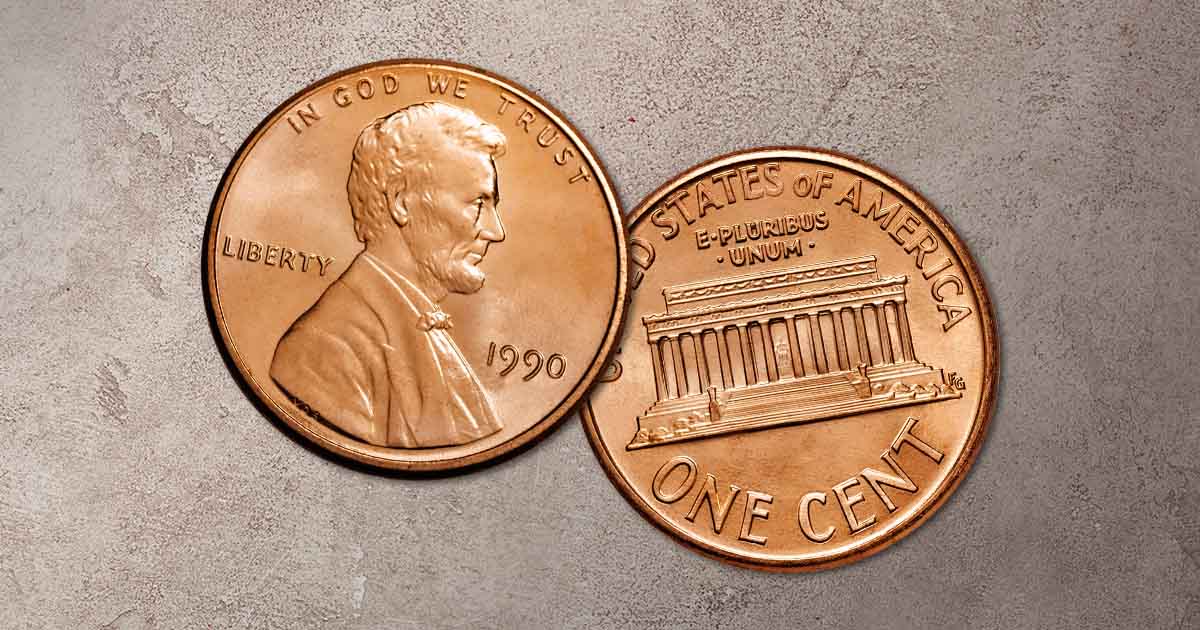
There are 181 current issue, copper-plated zinc Lincoln Shield Cents per pound but this answer can vary, depending on the type of penny you are weighing.
Changes to the Weight of the U.S. Penny
The weight of U.S. cent has not always been constant. In fact, there have been six different weights used for the U.S. penny, whose composition has changed eight times since the issue of the Large Cent in 1793.
From changing the source of copper to adding nickel, a change to bronze, shifting to zinc-coated steel, then gilding metal, and finally copper plated zinc, the penny has evolved.
Most of these changes have been to make the lowest denomination of U.S. coin more durable, although some compositional changes have occurred to reduce the production costs.
How Many Pennies are in a Pound?
If you are weighing a U.S. penny issued in October 1982 or after, they weigh 2.5 grams per cent and there are 181 pennies per pound.
But if you are weighing pennies issued between 1962 and September 1982, they each weigh 0.61 grams more than the current penny at 3.11 grams per coin. This change occurred as a result of rising copper costs and it requires about 146 of these pennies to make one pound.
Pennies minted between 1947 and 1962 changed composition from gilding metal (95% copper, 5% zinc) to bronze (95% copper, 5% tin and zinc), but their weight remained the same 3.11 grams per penny. This change in composition was made for greater durability.
Lincoln Wheat Cents produced in 1943 were zinc-coated steel to preserve copper for use in World War II weighed 2.72 grams each. If you have rolls of 1943 steel pennies, there are 167 per pound.
As for older issues like the 1859-1909 Indian Head penny, it will depend on the year of issue, as the weight of an Indian Head penny changed between 1864 and 1865. Indian Head pennies produced between 1859 and 1864 weigh substantially more than those made from between 1864 and 1909. The reason for this weight difference is the change from an 88% copper and 12% nickel composition to the bronze composition used for later Indian Head pennies.
Table of Penny Weights in Grains, Grams, and Pounds
There are 453.592 grams per avoirdupois pound, or 7000 grains.
| Years of Issue | Penny Weight in Grains | Penny Weight in Grams | Number Per Pound |
| 1856-1864 | 72 | 4.67 | 97 |
| 1864-1942 | 48 | 3.11 | 146 |
| 1943 | 42 | 2.72 | 167 |
| 1944-September 1982 | 48 | 3.11 | 146 |
| October 1982-Present | 38.6 | 2.5 | 181 |
Why is the Cent Still Used?
The U.S. penny has been issued since the United States was a fledgling nation of only 17 years and is one of the oldest coins issued by the United States Mint. Amid numerous debates about the cent’s low purchasing power and relatively high production costs, it remains essential for conducting commerce.
Nations That Have Phased Out One Cent Coins
There are several countries that have done away with their lowest denomination coins.
Canadian Pennies
Canada phased their 1 cent coin out and the final Canadian penny was minted on May 4, 2012. While they remain legal tender in Canada, they were withdrawn from circulation in February of 2013. The current lowest denomination of Canadian coin is the 5 cent Canadian nickel.
Australian One Cent and Two Cent Coins
While the Australian cent was issued for less than 30 years, both the one and two cent coins were withdrawn from Australian circulation in 1992. While these coins are still legal tender in Australia, they are not considered currency by the Royal Australian Mint.
New Zealand One Cent and Two Cent Coins
New Zealand, Australia’s neighboring nation, issued their final one cent and two cent coins in 1987. New Zealand then demonetized one cent and two cent coins on April 30, 1990. Since then, they have not had a legal tender status for the country.
Collecting Pennies
While the U.S. Mint may phase the penny out in the future, there have been no




